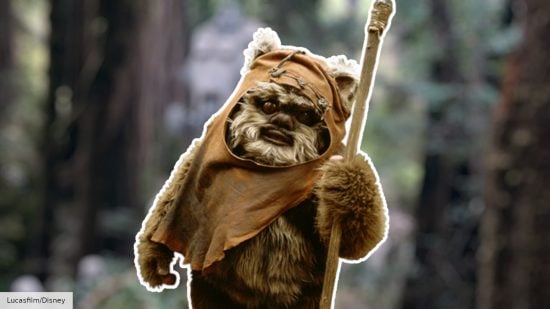It may have taken four decades, but Star Wars has finally addressed the elephant in the room from Return of the Jedi’s ending. No, not the different force ghosts depending on which version you watch, but the fate of the Ewoks after the second Death Star is destroyed.
Back in the ’90s, astrophysicist Curtis Saxton did some deep dives on what the reality of Star Wars would look like. He concluded that the third Star Wars movie of the Original Trilogy would have heinous consequences for the native population of Endor. “No animal larger than a few kilograms and incapable of long sheltered hibernation could survive the Endorian calamity,” he wrote, breaking down how the entire ecosystem would suffer from the events of the science fiction movie.
Now, some 40 years after the Rebellion defeated the Galactic Empire once and for all, Star Wars has provided challenge to Saxton’s claims. In the short story Lost in the Woods by S T Bende, from Star Wars Insider #221, it’s revealed Endor’s forests and everyone there, Rebel and Ewok alike, was just fine after Return of the Jedi rolled credits.
We already knew Endor didn’t get the worst of the debris, thanks to The Rise of Skywalker. A significant amount of the Death Star’s shattered remains landed on Kef Bir, an ocean moon, viewable when Star Wars characters Rey, Poe, and Finn go there following the wayfinder. It makes for some stunning scenery in the action movie (a rare positive for The Rise of Skywalker).

Other supplementary materials have indicated some incorporation of Saxton’s findings. For instance, gravity around that area of the galaxy was impacted by the Death Star’s explosion, leading to strange phenomenon that’s still unexplained. Saxton believed there would be “intangible” impacts on the environment and such that were difficult to quantify, and that certainly seems the case.
As a firm Ewoks enthusiast, I’m glad Star Wars has erred on the side of keeping the fairy tale of living with cute bears after overthrowing fascism alive. No part of me wanted to believe Wicket and his pals starved in some approximation of a nuclear winter because they helped destroy a weapon of mass destruction.
Now we know for sure they didn’t! Honestly, the next time I’m watching the Star Wars movies in order, I’m going to be even more delighted when the Galactic Empire‘s plans are ruined. Sometimes all you want is escapism! Check out our new Star Wars movies guide to see what’s coming up in a galaxy far, far away, and we have a list of the Star Wars series ranked, if you’re thinking about going deeper than the films.
